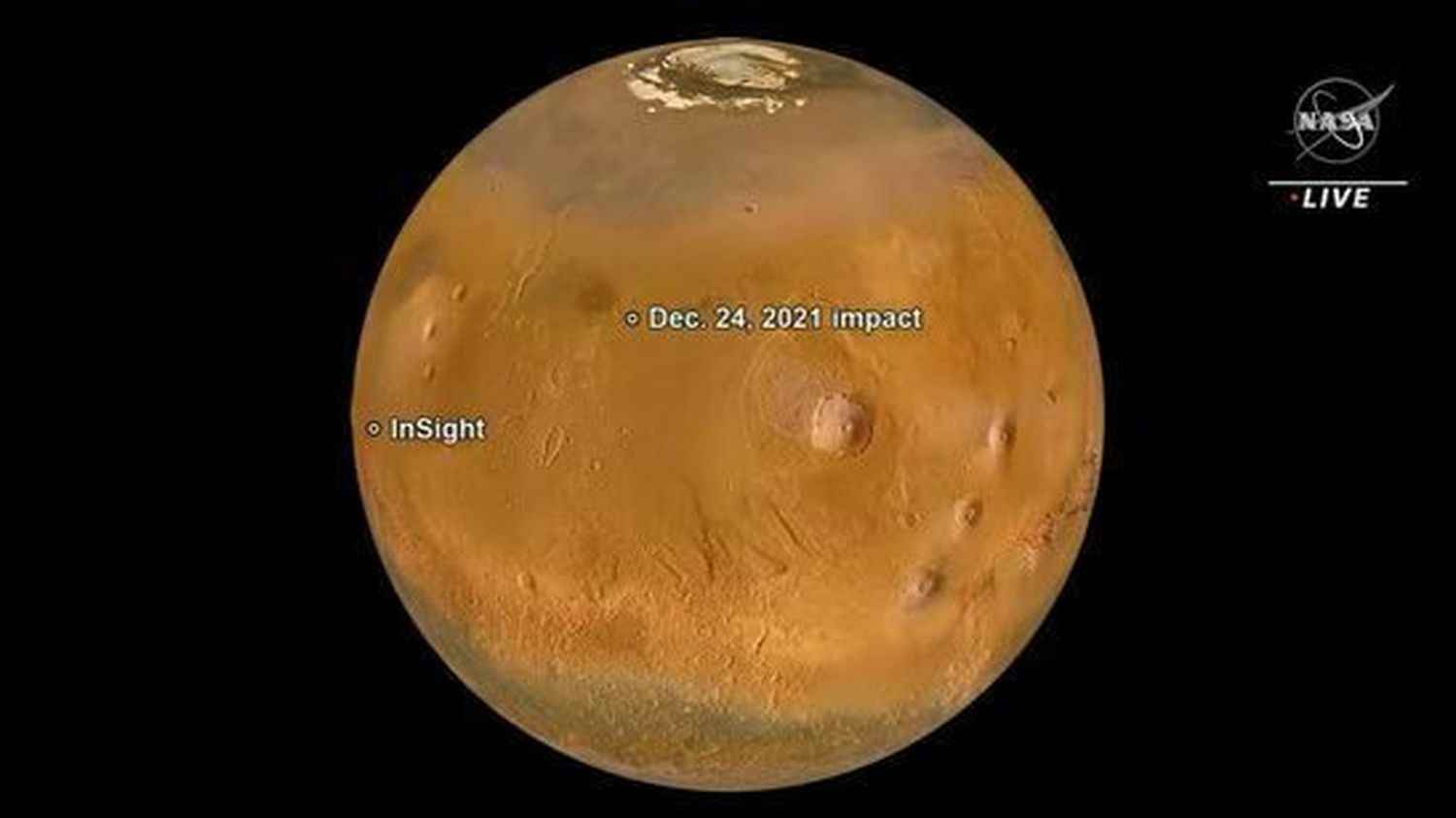In its long-awaited press conference Thursday evening, the American space agency also revealed that ejecta of water ice had been discovered.
Article written by
Published
Update
Reading time : 2 min.
It was the size of a van. A 200 ton meteorite crashed into Mars, NASA announced Thursday, October 27, during a highly anticipated press conference, broadcast live on YouTube. Precisely, thehe seismometer of the InSight mission has detected two major impacts on the Red Planet. They date back to December 24, 2021. The larger of the two impacts caused a crater 150 meters in diameter and 21 meters deep. “Some debris flew up to 37 kilometers”reports the American space agency in its press release (link in English).
It is not only the first time that such a significant impact has been observed on the Red Planet, but above all, “Such collisions have not occurred for several centuries on Earth”, remember Science and Future. This “major discovery” is “based on observations made by the InSight landing module on Mars” and by the Mars Reconnaissance Orbiter mission, the scientists report. “It is unprecedented to find a new impact of this sizesaid Ingrid Daubar of Brown University, who leads InSight’s impact science working group. This is an exciting time in geological history, and we need to witness it.”
The US space agency has posted several images of the impacts on its site. It also broadcast the sound corresponding to the shock wave. Listen up:
That’s not all : “Large chunks of ice dispersed by the impact were observedsays NASA. Underground ice will be a vital resource for astronauts who could use it for a variety of purposes, including drinking water, agriculture, and rocket propellant.”
Contacted by franceinfo, Olivier Sanguy, specialist in space news at the Cité de l’Espace in Toulouse, confirms the interest of this discovery: “That water ice is in this Martian soil means that there was water on Mars and this is of great interest to NASA for future manned missions, so the deadline is still to be determined. Water ice is important as a resource because we know that we can’t take everything on Mars missions. So we have to exploit local resources.”
